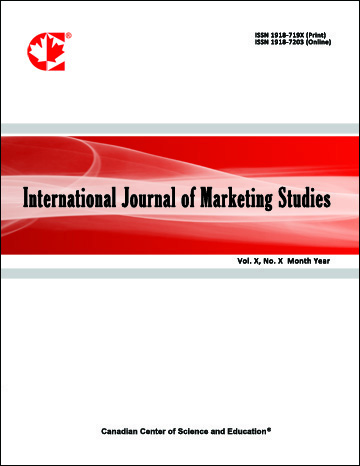Theoretical and Perceptual Market Values for Fresh Squeezed Orange Juice
- Hyeyoung Kim
- Lisa House
- Zhifeng Gao
Abstract
This study measures product differentiation effects from observing the fresh orange juice being squeezed on the willingness to pay for a glass of fresh juice. Both the Westendorp price sensitivity meter and a hypothetical choice experiment are used to estimate consumer willingness to pay. Results from the hypothetical choice model indicated when participants observed the process of squeezing fresh oranges to make juice, they were statistically willing to pay higher values not only for the fresh squeezed orange juice, but other types of orange juices as well. The van Westendorp method failed to pick up significant differences in willingness to pay for fresh, or other, juices. This may be due to the lack of theoretical grounding and incentive compatibility, leading to underestimating the value of the fresh squeezed orange juice.
- Full Text:
 PDF
PDF
- DOI:10.5539/ijms.v4n2p45
Journal Metrics
Google-based Impact Factor (2021): 1.34
h-index (July 2022): 70
i10-index (July 2022): 373
Index
- Academic Journals Database
- CNKI Scholar
- EconBiz
- Electronic Journals Library
- Excellence in Research for Australia (ERA)
- GETIT@YALE (Yale University Library)
- Harvard Library
- IBZ Online
- Infotrieve
- JournalTOCs
- LOCKSS
- MIAR
- PKP Open Archives Harvester
- RePEc
- ResearchGate
- ROAD
- Scilit
- SHERPA/RoMEO
- Stanford Libraries
- UCR Library
Contact
- Alyssa SunEditorial Assistant
- ijms@ccsenet.org
